
surfresearch.com.au
conneeley hulls and cundith twin-fins, 1976.
conneeley hulls and cundith twin-fins, 1976.
|
|
|
|
|
|
 |
surfresearch.com.au
conneeley hulls and cundith twin-fins, 1976. |
| Craig Leggat : Robert
Connelley Hulls |
Paul
Holmes : Michael Cundith Twin-fins |
| shape the concept is to produce an all round Australian hot-dog board Optically the plan shape is a curve reaching its widest point 5" forward of halfway and running into a parallel taper until just in from of the fin area. At this point, when your back foot rests, the parabolic taper transforms into an accelerating curve running into the tail. The tail is a rounded square tail, with two points of circumference that change the plan shape curve and then become one fixed radius curve thru the plan shape of the back. |
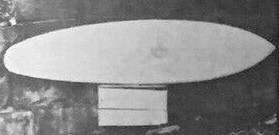 |
| One of the
most misunderstood ideas in surfing is the
hull bottom concept. Basically, when you look down on the plan shape off the bottom you observe a centre plain 12 1/2" wide which looks like an inlaid miniature plan shape of the board. Off the side of this miniature planshape is the tri-plane, a strip 4" wide and 3/16" thick, at a slight angle to the centre plane. The chine tappers out nose to tail. When looking along the bottom of the board from the nose, you see a plateau in the middle of the board with two side flats diminishing until they reach the fin. This design gives the board a flat planning section both on its side during a turn and when moving straight. It gives a depth below the water line and allows the board to sit buoyantly on it's curve when being turned. |
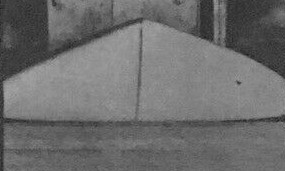 |
fin Because the board is designed around this one planing area it requires a very special fin to drive it. My first fins were shaped by George but as his fins were not designed for all round surf, but rather specialist tube surf, the fin has needed to be greatly changed. The basis of the fin is a blunt leading edge flowing to a thick spine 1/5 of the way back, then a flat taper. The concept of the fin's area shape is to have a medium width base with a calculated all the way to the tip. There is also a concave taper in the thickness from the widest point in the base through to the tip. |
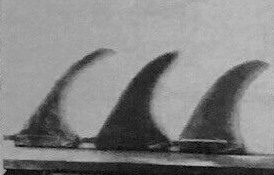 |
Robert Conneeley, Cronlla Point. |
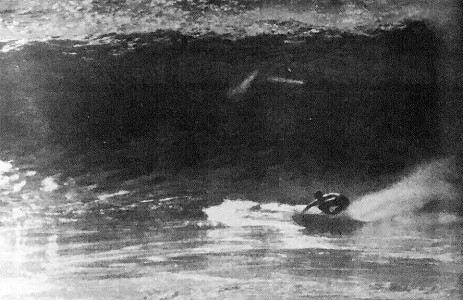 |
Design :
Michael Cundith Twin Fins Interview with Paul Holmes (?) Photographs by Martin Tullemans. Michael
Cundith, new look twin fins.
|
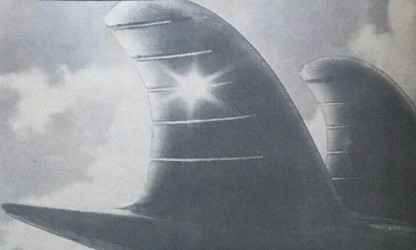 |
"With so much small surf on this coast I thought it would be a good move to fully explore the capabilities of twin fins," said Michael . With two fins and everything put together right, you've got a simple, fast hot-dogging unit. They have the thrust of a bonza and you can keep the speed up when you really need it, or stall when you have to. Unreal on roundhouse cutbacks. The new interest in twin fins started when I just happened to make one for myself a few months ago, and decided later that I really didn't want it. Then a friend of mine came in and took one look at it and said "I'll take it," and I suddenly thought, "Wait a minute, this guy's really flashing on this board, maybe I should keep it," but he hounded me and hounded me and finally I let him buy it and he took it surfing and I took it off him in the water for a wave and I've never gotten off it since. I told him I would make him another one and the poor guy had to wait 3 weeks!" "Derek Beckner's been riding twin fins for ten years. He put me onto them when I was still in the States in '69. He was riding a Rolf Aurness model which Mike Eaton was shaping. But I couldn't get into them back then, they seemed to have too many hangups so I gave up surfing 'em. Even back then I was thinking about maybe altering the rocker and so on, and I did make one which I liked more but it was too big for me. A few months ago there seemed to be a bit of rekindled interest in twin fins, so I thought I would give it another go. |
 |
| There's
a 10-12" flat section in the rocker about a foot up
from the tail and then there's just (???) rocker
throughout to the nose. If you get a straight edge on the flat section there's about ???" kick in the nose, and about 1/2" kick in the tail. That's the kind of rocker I use in all my boards with the flat section and a bit of tail lift. (I feel that) with all through rocker the board tends to (???) and your committed to hooking all the way (??). I like a board that'll run when I need it to and to hold back when I need it to. The fins have to be very accurately positioned with the foils thick at the base and thin at the tips. They work and they will be back in popularity (??). They're set with the tracking edge set level with the depth of the swallow, about 1 1/4" from the rail and their toed in slightly and (??? ... ???). They're toed in more if only for small waves. This gives them a hydro-thrust effect, they actually off in turns. Also, I'm really (experimenting?) with the extra flex I'm getting by putting the (??) in the fins. |
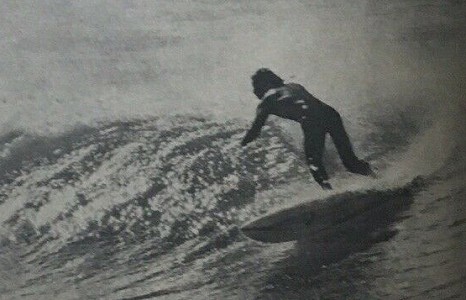 |
|
|
|
|
|
|